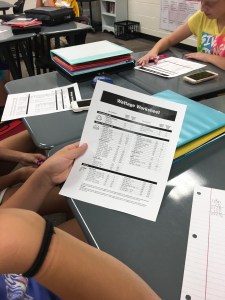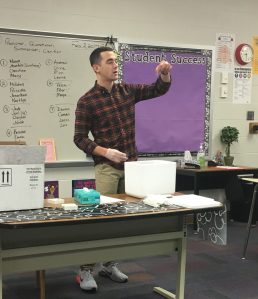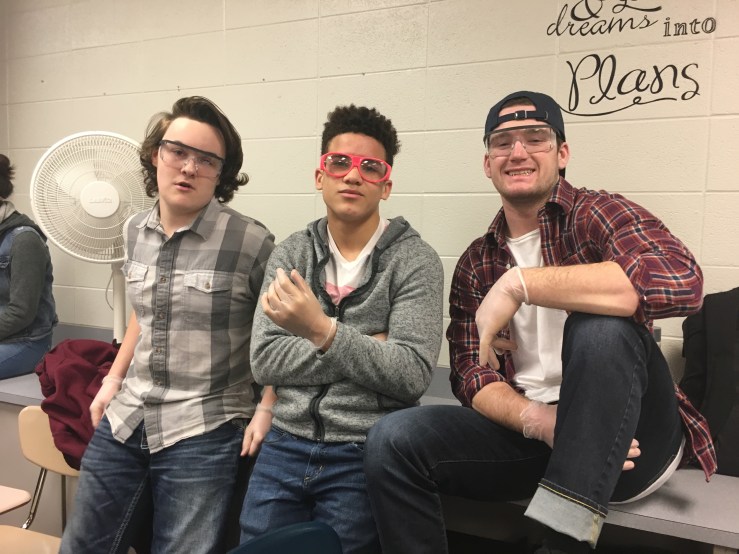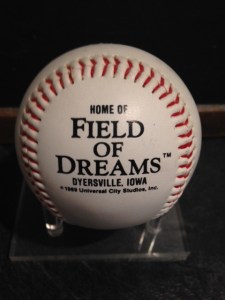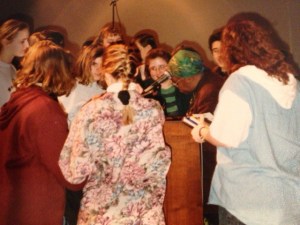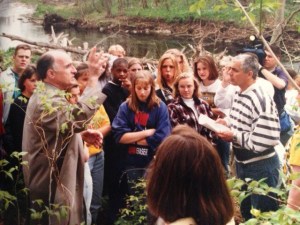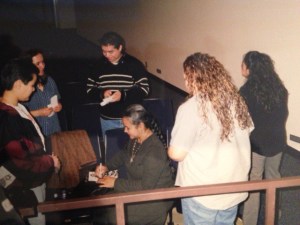
A few weeks ago, I was asked to give a book talk to a women’s group in my town about To Kill a Mockingbird and Harper Lee’s second book, Go Set a Watchman. My only credentials for that talk are these: I’ve read Mockingbird at least 35 times and I taught the novel to 9th graders for 31 years. Several of those 35 reads occurred before I became a teacher. In fact, my mother gave Mockingbird to me for my birthday just before my senior year in high school—the year that the book was published. I read it start to finish in one big gulp and then read it again, under the covers with a flashlight. Lee’s story captured me right from the start.
For all those 31 years of teaching, I began each class’s study of Mockingbird by reading aloud just a bit about Atticus and the small town of Maycomb:
When he was nearly thirteen, my brother Jem got his arm badly broken at the elbow. When it healed, and Jem’s fears of never being able to play football were assuaged, he was seldom self-conscious about his injury. His left arm was somewhat shorter than his right; when he stood or walked, the back of his hand was at right angles to his body, his thumb parallel to his thigh. He couldn’t have cared less, so long as he could pass and punt.
When enough years had gone by to enable us to look back on them, we sometimes discussed the events leading to his accident. I maintain that the Ewells started it all, but Jem, who was four years my senior, said it started long before that. He said it began to summer Dill came to us, when Dill first gave us the idea of making Boo Radley come out.
I said if he wanted to take a broad view of the thing, it really began with Andrew Jackson. If General Jackson hadn’t run the Creeks up the creek, Simon Finch would never have paddled up the Alabama, and where would we be if he hadn’t? We were far too old to settle an argument with a fist-fight, so we consulted Atticus. Our father said that we were both right.
And with that, Atticus is established as the authority, the hero, and even a god. “Our father.”
And then this, the description of the small town of Maycomb:
Maycomb was an old town, but it was a tired old town when I first knew it. In rainy weather the street turned to red slop; grass grew on the sidewalks, the courthouse sagged in the square. Somehow, it was hotter then: a black dog suffered on a summer’s day; bony mules hitched to Hoover carts flicked flies in the sweltering shade of the live oaks on the square. Men’s stiff collars wilted by nine in the morning. Ladies bathed before noon, after their three o’clock naps, and by nightfall were like soft teacakes of sweat and sweet talcum.
People moved slowly then. They ambled across the square, shuffled in and out of the stores around it, took their time about everything. A day was twenty-four hours long but seemed longer. There was no hurry, for there was nowhere to go, nothing to buy, and no money to buy it with, nothing to see outside the boundaries of Maycomb County. But it was a time of vague optimism for some of the people: Maycomb County had just been told it had nothing to fear but fear itself.
I love this passage. In two short paragraphs reside lessons in dating the setting via allusion, the art of alliteration and metaphor, the inclusion of exquisite detail that brings a scene and the mood so indelibly into focus. And the black dog: a tiny, tiny bit of foreshadowing.
Nelle Harper Lee grew up in Monroeville, Alabama. Her father was a successful and respected lawyer and for a time was one of the publishers of the local newspaper. Her mother, Frances Finch Lee, was a strange woman—possibly she suffered from bipolar disorder—and she and Nelle did not have a close relationship. Truman Capote lived next door in the summertime (His parents were divorced and he spent summers in Monroeville with relatives), and Nelle and Truman were fast friends. Legend has it that they spent hours writing stories together on an old Underwood typewriter. Nelle went to college and even did a year of what we’d call today, pre-law. But she wanted to be a writer, so at age 23 she went to New York City to live and work. Working days, first in a bookstore and later for Eastern Airlines and later still for BOAC, and writing at night, she produced a draft of a book. Her agent first made suggestions for revision—which Nelle dutifully made—and then an editor at HarperCollins, Tay Hahoff (who died in 1974) spotted the real story in what seemed like a string of short stories. Hahoff saw promise in the prose, too, and encouraged Nelle to revise the manuscript. Friends gave Nelle a Christmas present of enough money to live on for a year so she could write full-time. What resulted, two and a half years later, was To Kill a Mockingbird.
Mockingbird was published on July 12, 1960—right in the middle of a decade that began in 1954 with the Brown vs. the Board of Education ruling by the Supreme Court—ordering the desegregation of the public schools—and ended with the passage in 1964 of the Civil Rights Act and in 1965 with the Voting Rights Act. That’s important because the Civil Rights Movement, as it came to be called, dominated the news. To Kill a Mockingbird was—and still is—a stab at the conscience of America.
The setting of Mockingbird is Maycomb (read, Monroeville) in the 1930s. The trial of the Scottsboro Boys is often cited as the inspiration for the Tom Robinson story, but it wasn’t. A local and far less sensational rape case was the true model. A.C. Lee, Harper Lee’s father, was, however, the inspiration for Atticus Finch.
Mockingbird—sometimes lauded for being a charming coming-of-age story (which it is)–follows two main plot threads. One is the trial of Tom Robinson, a humble black man who has been accused by a white man, Bob Ewell (the “mad dog” of the book), of raping his daughter, Mayella. She is a lonely young woman who has been sexually abused by her shiftless, alcoholic father. She accosts Tom, and her father sees it. Tom runs, though he’s done nothing wrong, and Ewell accuses him simply because he can. He thinks the town will thank him for it. Atticus Finch takes the case on principle: He couldn’t look his children in the eye—couldn’t make them mind him, he said—if he himself doesn’t do what is right. But he knows he is fighting a losing battle: There is no precedent for acquittal in such a case, even when the defendant is plainly not guilty. Speaking to the jury, Atticus memorably characterizes the case as being “as simple as black and white.”
The other thread in Mockingbird is that of Boo Radley, a strange and reclusive man who lives in a house down the street. Boo befriends the children—though they remain “spooked” by him–and ultimately saves their lives when Ewell attempts to kill them on a dark Halloween night. The two stories are thus brought together and Scout articulates the meaning of the title when she assures her father that prosecuting Boo Radley would be like shooting a mockingbird; that is, persecuting innocent and helpless individuals—like Tom Robinson and Boo Radley—who “don’t do one thing but make music for us to enjoy.” Thus, a string of short stories is woven together by the symbolism of mad dogs and mockingbirds.
Atticus is the quintessential epic hero. A little aside here: I also taught The Odyssey and directed my students’ attention to the epic tradition. The students drew the comparison easily—because it is there. Harper Lee won a Pulitzer Prize and the book was translated into 10 languages within a year of publication—ultimately, into 40—and has never been put of print. In the 1962 film version, Gregory Peck portrayed Atticus. The book is still the most widely taught novel in schools across the country (a few attempts at banning it notwithstanding—in fact, those attempts only increased its readership!). Atticus Finch was elevated to the status of a god—one who looks just like Gregory Peck.
Then came Watchman in 2015. The publishers provided a trigger warning—and many people declined to read the book. (Me included, even though I’d preordered from Amazon.) Atticus, we were told, turns into a racist. It was a year before I read Watchman because each review was worse than the last. Like a lot of other people, I didn’t want to be disillusioned. Eventually, I gave in. I’d written extensively about teaching Mockingbird on my blog. It seemed like chickening out not to read Watchman. Now I’ve read it twice. That will probably be enough.
People usually mark the beginning of the Civil Rights Movement with the Brown vs. the Board of Education decision. On the heels of that decision came two momentous events: the murder of Emmett Till in Money, Mississippi, in 1955 and the beginning of the Montgomery Bus Boycott, led by Martin Luther King, Jr., and initiated when Rosa Parks refused to give up her seat at the end of a long, hard day. In 1956, the Supreme Court ruled again, ordering the desegregation of the Montgomery buses.
Emmett Till’s funeral was portrayed in a photographic spread in Life magazine. The bus boycott ended after a year with another Supreme Court ruling, this one ordering the desegregation of the Montgomery, AL buses. Those two events are the backdrop for Go Set a Watchman.
The book opens with Jean Louise, the grown-up Scout, returning to Maycomb from New York City for a visit. It appears at first to be a love story involving a boy who had lived across the street when Jean Louise was young, a boy whom Atticus has mentored and taken into his law firm. In the book, Jem has died and Dill has gone missing. Two characters of major importance in Mockingbird aren’t in Watchman: the “ghost” Boo Radley and Mrs. Dubose, the harridan who lives down the street and menaces the children but turns out to be a dying woman trying to get out from under a morphine addiction. Uncle Jack plays a much more important role in Watchman; Aunt Alexandra is still a foil for Atticus. Calpurnia, the black woman who raised Scout and Jem, makes an appearance, but it’s a cold one. And Atticus—well, Atticus at 72 is the same man in many ways, but there’s this disturbing thing about his stance on civil rights.
Indeed, in Watchman, Atticus is portrayed as a man with deep reservations about the events of the 1950s. In the book, he has joined the White Citizen’s Council in Maycomb—organizations like this had sprung up all over the South in response to those Supreme Court rulings. In conversations with Jean Louise, Atticus espouses the policy of gradualism. His remarks reveal not only a paternalistic attitude toward African-Americans, but downright racist ones.
I was prepared for Atticus. It was Scout who appalled me. Her outrage over her father’s attendance at the White Citizen’s Council meeting culminates in a scene full of excess, a confrontation with so much invective and vitriol that I was shocked. Yes, Jean Louise is shocked by what she has learned about her father, but she screams at him, calls him names, and carries on beyond my ability to believe. She’s also brutal in her attacks on her aunt—rude, profane, and frankly, unforgivable. She knows better.
I told him in detail about our trip to church with Calpurnia. Atticus seemed to enjoy it, but Aunt Alexandra, who was sitting in a corner quietly sewing, put down her embroidery and stared at us.
“You all were coming back from Calpurnia’s church that Sunday?”
Jem said, “Yessum, she took us.”
I remembered something. “Yessum, and she promised that I could come out to her house some afternoon. Atticus, I’ll go next Sunday if it’s all right, can I? Cal said she’d come get me if you were off in the car.”
“You may not.”
Aunt Alexandra said it. I wheeled around, startled, then turned back to Atticus in time to catch his swift glance at her, but it was too late. I said, “I didn’t ask you!”
For a big man, Atticus could get up and down from a chair faster than anyone I ever knew. He was on his feet. “Apologize to your aunt,” he said.
“I didn’t ask her, I asked you—“
Atticus turned his head and pinned me to the wall with his good eye. His voice was deadly. “First, apologize to your aunt.”
“I’m sorry, Aunty, I muttered.
“Now then, he said. “Let’s get this clear: you do as Calpurnia tells you, you do as I tell , and as long as your aunt’s in this house, you will do as she tells you. Understand?”
I understood, pondered a while, and concluded that the only way I could retire with a shred of dignity was to go to the bathroom, where I stayed long enough to make them think I had to go.
That scene, a lesson in courtesy that couldn’t have failed to stick, is from Chapter 14 of Mockingbird, shortly after Aunt Alexander, the children’s nemesis, arrives to supervise Jem and Scout during the long, hot summer of Tom Robinson’s trial.
Watchman, to my mind, is more autobiographical than Mockingbird—in this way: It is far more revealing of Harper Lee’s state of mind in the 1950s. The years of Watchman are the years that she was living in New York. She’d come back to Monroeville on the train for a visit—and undoubtedly she’d hear the rhetoric of the white families in her hometown. At one point, early in the story, Atticus even asks her what the New York papers make of what’s “going on down here.” It seems likely to me that in Watchman, Harper Lee was working through her own emotional responses to the events of the day and her reactions to the reactions of her family and community to these same events.
When I finally approached the book, I was already braced for Atticus. I expected to read amateurish writing—I did—but I also hoped I’d see a text that would make the power of revision clear to young writers, to my students. With Mockingbird, I’d taught them more than how to read a novel, more than how to discover theme. I’d opened their eyes to the elements of style. So I hoped for early indications of that style in Watchman. I found them. Words, expressions, a proclivity for allusion, humor—though not much irony. But the story seems thin to me—and disjointed. There are some treats: a flashback to Scout, Jem, and Dill playing—not Boo Radley, but “Evangelist.” A long chapter featuring the loquacious Uncle Jack, as usual, circumventing a topic and making allusions to British history. A nice picture or two of various neighbors from Scout’s childhood days. It’s just that the richness, the fullness of Mockingbird isn’t there. Too much talk and not enough weaving of story line. It’s as if the book had been stripped of its best parts—and it probably was. For Mockingbird.
Few critics like Watchman.
Some make a mistake that’s easy to make: It’s the same mistake I made by thinking Scout should know better than to be so rude to her father and her aunt. The chronology of the two stories can be confused with the order in which they were written. Watchman came first. Atticus is 72 years old and the backdrop is 1956. Mockingbird was written second—presumably as a revision of Watchman—and the backdrop is the 1930s. In their responses to the publication, some people called Watchman the sequel—as if the two were intended one to follow the other. Looked at that way, Atticus is indeed a disappointment.
Others knew something of the revision work Harper Lee had done and took the statement from the publisher at face value: Watchman was a draft and Mockingbird was the fruit of revision. These reviewers looked at the “new” text for the seeds of Mockingbird and noticed that the story of Atticus and the rape trial is presented in just a paragraph and as a flashback. They noticed the shortcomings of a novice writer and expressed the opinion that Watchman should never have been published. The second publication tarnishes the first.
Many questioned the motives of Lee’s lawyer in providing the book to HarperCollins and HarperCollins for publishing it. They speculated that Lee, hard of hearing and poor of eyesight, ill and in a nursing home, had been manipulated into publishing the book. There’s been so much confusion that we still don’t know the provenance of the book for sure.
Some said, and I agree, that in terms of producing literature, Harper Lee’s editor, Tay Hahoff, was brilliant: Here’s your story—the rape case—now run with it—and somehow, make all these short stories into a coherent piece. Which Harper Lee did, producing, to the benefit of readers everywhere and especially to the benefit of English teachers who know the book is a cornucopia of lessons in narrative arc, character development, symbolism, irony, and style, To Kill a Mockingbird. Long, languid sentences and hilarious scenes of children at play evoke the best of a time and place gone by. Short, direct, blunt utterances, a scene when Atticus shoots a rabid dog, and carefully crafted court scenes carry the message that prejudice is a disease and reveal the hard truth that the justice system is imperfect. The climax—when Scout meets Boo Radley at last and discovers his humanity is a touching depiction of the moral imperative to treat everyone with dignity and compassion.
For a while after To Kill a Mockingbird was published, Harper Lee herself spoke of trying to write a second book. It was going to be about race. Presumably, the setting would be Maycomb, or at least Alabama. Adam Gopnik, writing in the New Yorker, ventured this idea: Did Lee return to the original Watchman years after Mockingbird was published? Did she revisit her first draft when she was older and struggling under the pressure of success to write a second book? Is Watchman actually a post-1960 revision of the original first draft? Gopnik points out that Watchman is confusing without a prequel, without Mockingbird. He points out that the shock of Watchman is only felt if the reader already knows Mockingbird. If not, he posits, who would care about Atticus’s “fall from grace?”
But we are not going to know the whole story. It remains a literary mystery. Or at least it will until another manuscript is “discovered.” The best we can do now is enjoy Watchman, if we did, for what it is: the incomplete work of a novice writer. Or, if we hold with Gopnik, the unfinished work of an extraordinary writer faced with an impossible task: producing another book that could hold a candle to her first.
And, this of course: We can continue to relish Lee’s enduring masterpiece, To Kill a Mockingbird.





